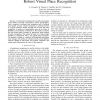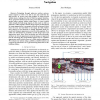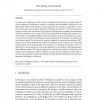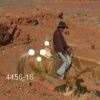58 search results - page 6 / 12 » Local appearance space for recognition of navigation landmar... |
ICRA
1993
IEEE
14 years 20 days ago
1993
IEEE
The problem of programming a robot t o carry out a systematic exploration of its environment using realistic sensors is considered in this paper. The robot is modelled as a single...
IROS
2006
IEEE
14 years 2 months ago
2006
IEEE
— An important competence for a mobile robot system is the ability to localize and perform context interpretation. This is required to perform basic navigation and to facilitate ...
ICRA
2010
IEEE
13 years 7 months ago
2010
IEEE
Abstract— Navigating through unknown outdoor environments requires a robot to be able to see and model the far field terrain. In recent years this problem of seeing beyond relia...
IVC
2007
13 years 8 months ago
2007
In urban areas, buildings are often used as landmarks for localization. Reliable and efficient recognition of buildings is crucial for enabling this functionality. Motivated by t...
CVPR
2010
IEEE
2010
IEEE
Learning a Hierarchy of Discriminative Space-Time Neighborhood Features for Human Action Recognition
14 years 5 months ago
Recent work shows how to use local spatio-temporal features to learn models of realistic human actions from video. However, existing methods typically rely on a predefined spatial...




